Evergreen is a term used to describe plants (trees and shrubs especially) with permanently green foliage. At the same time, their foliage must be functional throughout the year – to help the plant grow and develop.
On the other side of the spectrum, you can find deciduous plants. They can be easily mistaken for evergreen plants, as they keep their foliage on for most of the year. However, deciduous plants are left without foliage when the autumn or winter season hits.
As mentioned, mainly shrubs and trees are evergreen plants. In this article, we’ll tackle trees, which are quite varied and incredibly beautiful. Depending on the location you’re visiting, knowing which tree is evergreen will certainly make your exploration of the surrounding areas more interesting!
Without any further ado, here are four different types of evergreen trees!
The Complicated Classification of Evergreen Trees
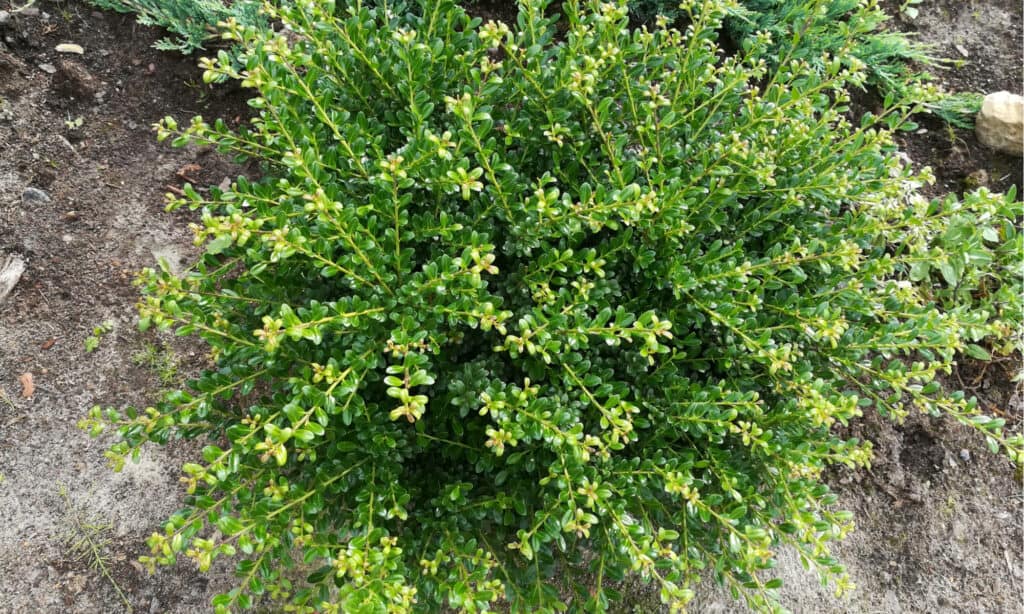
Helen Pitt/Shutterstock.com
There are about 35 individual evergreen tree species out there. They can be categorized into four different types according to class. The four classes are conifers, tropical hardwoods, temperate broad-leaved trees, and a group of uncategorized trees.
Each class features its own trees; conifers feature the most, but most are of the same genera. For example, there are multiple species in the pine genus. Because of this, we won’t talk about every evergreen tree that is a conifer but only about the main species – pine, hemlock, redwood, cypress, fir, spruce, and yew.
Evergreen Trees – What Are Conifers?
Conifers are a division of trees and shrubs that produce seeds in the shape of cones ( gymnosperms). This division features a single division of plants called Pinophyta that contains the only extant class Pinopsida, which encompasses a great variety of evergreen trees and shrubs.
Pinophyta, or the Coniferae division, consists of eight families spread across 68 genera and a total of 629 living species. Below are the evergreen tree species that are part of this division.
Pine
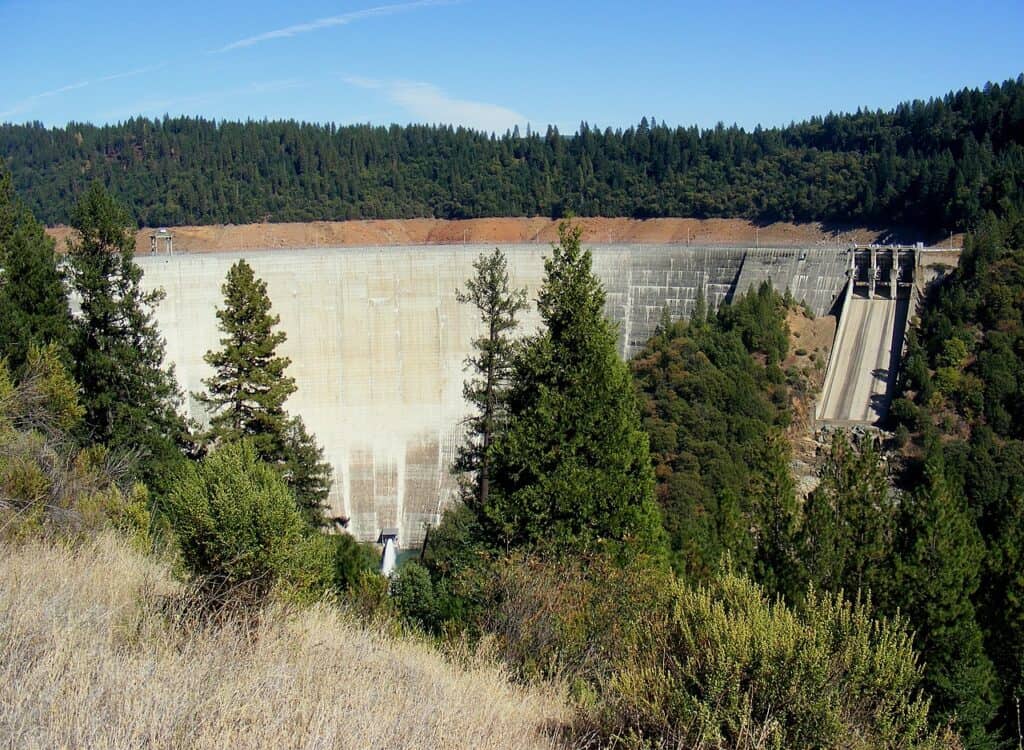
J.smith / Creative Commons – License
Pines are mostly coniferous evergreen trees. Some shrubs are also part of the same genus. A pine tree is about 10 to 260 feet tall; the average specimen is around 50 to 150 feet tall. The tallest pine tree is a ponderosa pine, which measures 268 feet tall. The genus is well-known for its lifespan. Pine trees are long-lived evergreen trees, usually reaching at least 100 years and up to 1,000 years.
Hemlock
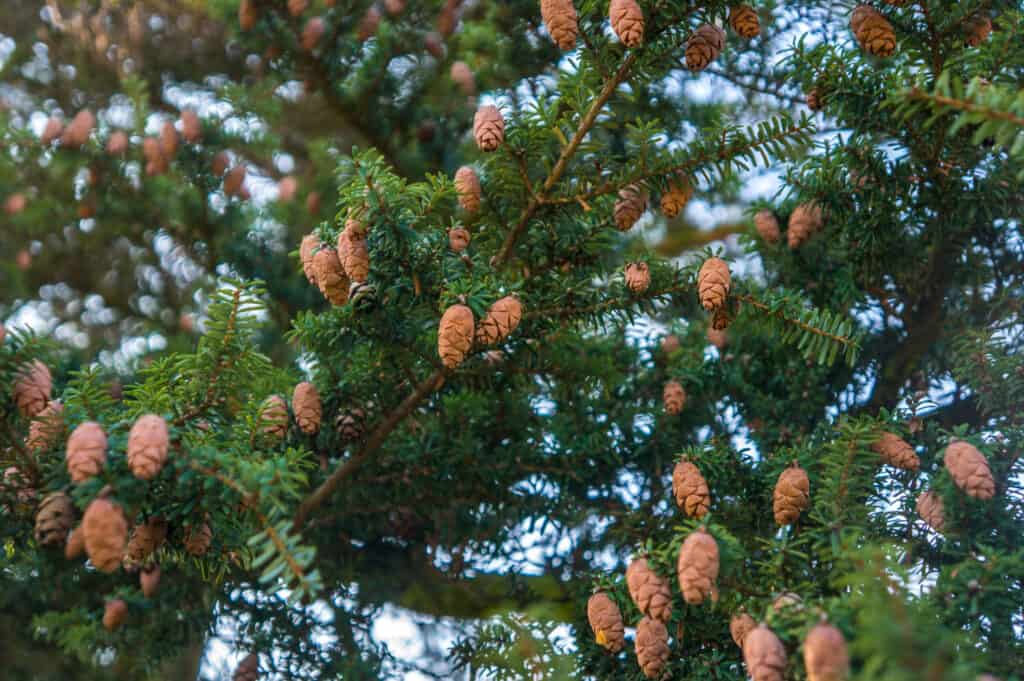
iStock.com/Sara Lissaker
Tsuga is the scientific, official name for the hemlock tree. The name hemlock comes from the similarity in the smell of this evergreen tree with a poison plant named hemlock. Tsuga trees are known for their impressive size – averaging 33 to 197 feet high.
This particular genus consists of about 11 species, spread relatively equally throughout eastern Asia and North America. Hemlock trees can endure heavy snowfall and even ice storms, so they’re more adaptable compared to other species in the same family.
Redwood
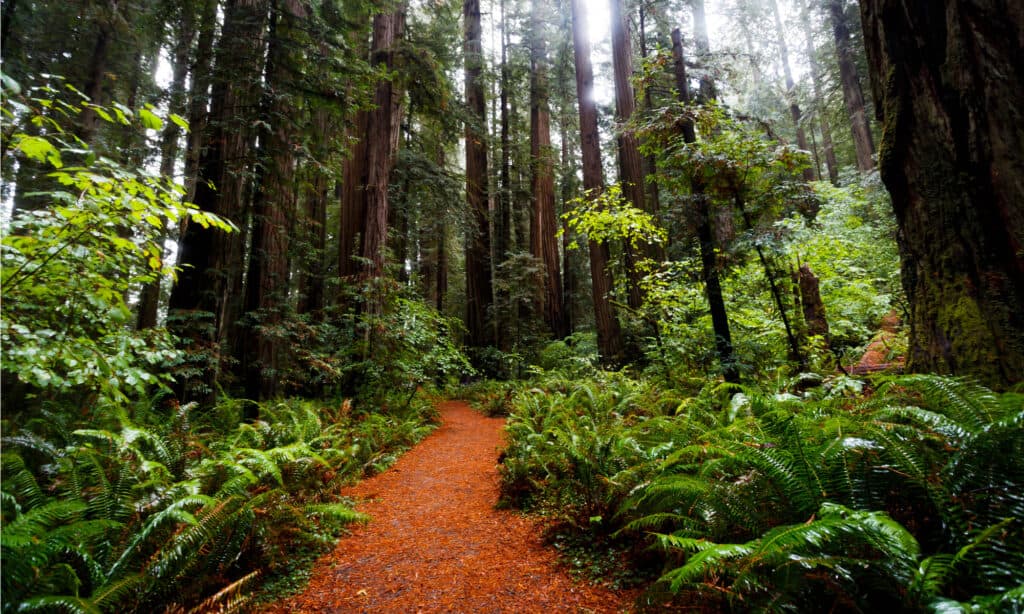
The Migrating Monkey/Shutterstock.com
Redwood is the term used to refer to any species part of the Sequoioideae subfamily (family Cupressaceae). There are three genera in this subfamily. Redwood trees are known for the fact that they can live for thousands of years. The tallest and largest trees in the world are redwood trees.
Sequoia and Sequoiadendron are found in North America (California, Oregon, and the Sierra Nevada).
Cypress
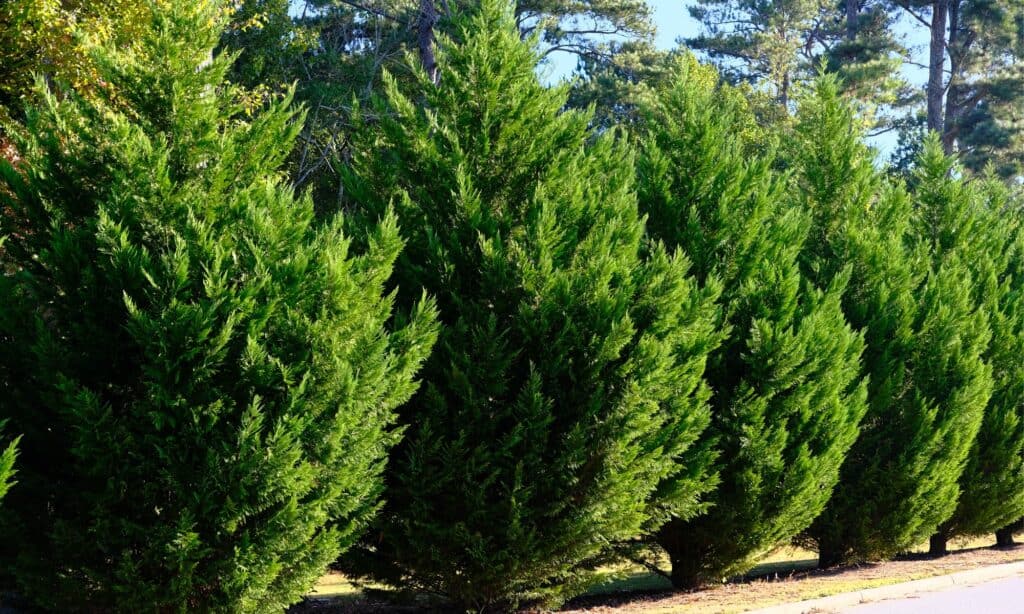
iStock.com/dbvirago
Cypress trees are found in northern temperate regions and are part of the Cupressaceae family. Their distinct characteristics are the seed cones shaped like acorns and, naturally, evergreen foliage. However, keep in mind that, as with every family or genus, not all species are evergreen. This is why each table above includes a special section mentioning the evergreen species of each type of tree.
Specimens in this family grow to 131 feet high and feature needle-like leaves. Unlike other species, the seed cones of cypress trees are held in closed cones until the tree is killed by fire. The cones then release the seeds and repopulate the area.
Fir
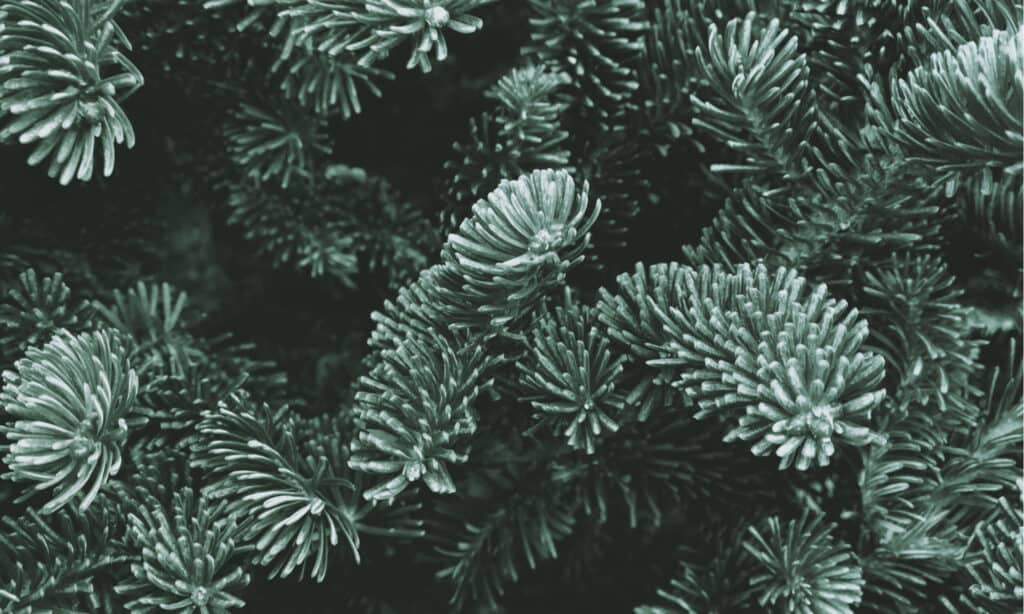
Iris_Images/Shutterstock.com
Fir trees, also known as the Abies genus, consist of about 48 – 56 species of coniferous trees. Firs are commonly found throughout Central and North America, Asia, North Africa, and Europe. This genus is known for its exceptional heights – up to 262 feet – and large trunk diameters – up to 13 ft 1 in.
You can easily identify fir trees by their special leaves – needle-like and attached to the branch by a base.
Spruce
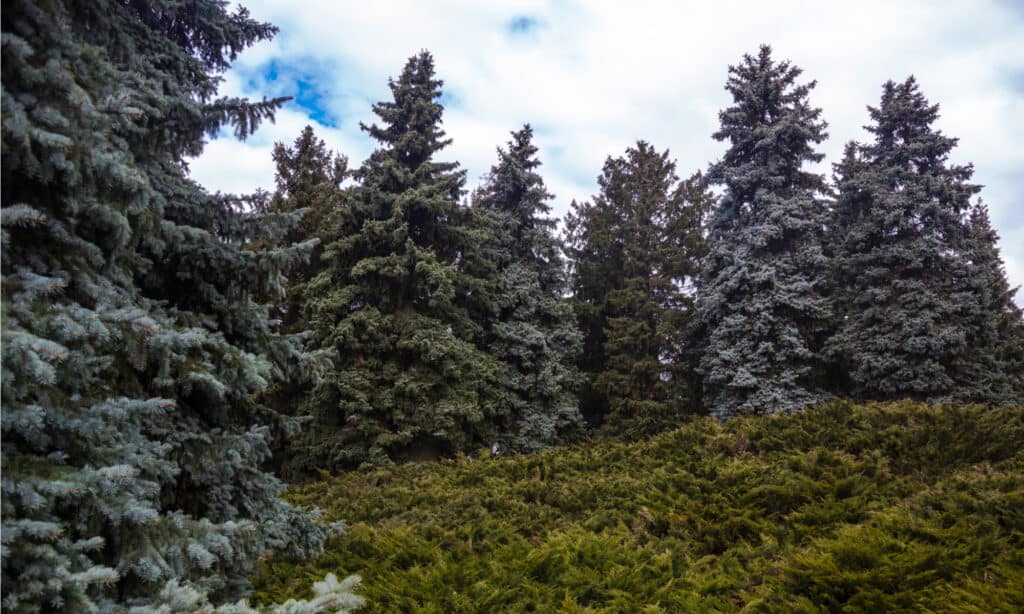
rootstock/Shutterstock.com
Spruce trees make up the Picea genus and are represented by a total of 35 species. These trees can be found in both boreal and temperate regions throughout the world. They are quite tall, reaching heights of up to 200 feet. You can easily differentiate regular conifers from spruce by the latter’s leaves – they are four-sided and attached to a small base/structure.
A Norway spruce is believed to be the oldest known living tree in the world. Old Tjikko was found by scientists in Sweden and is about 9,550 years old.
Yew
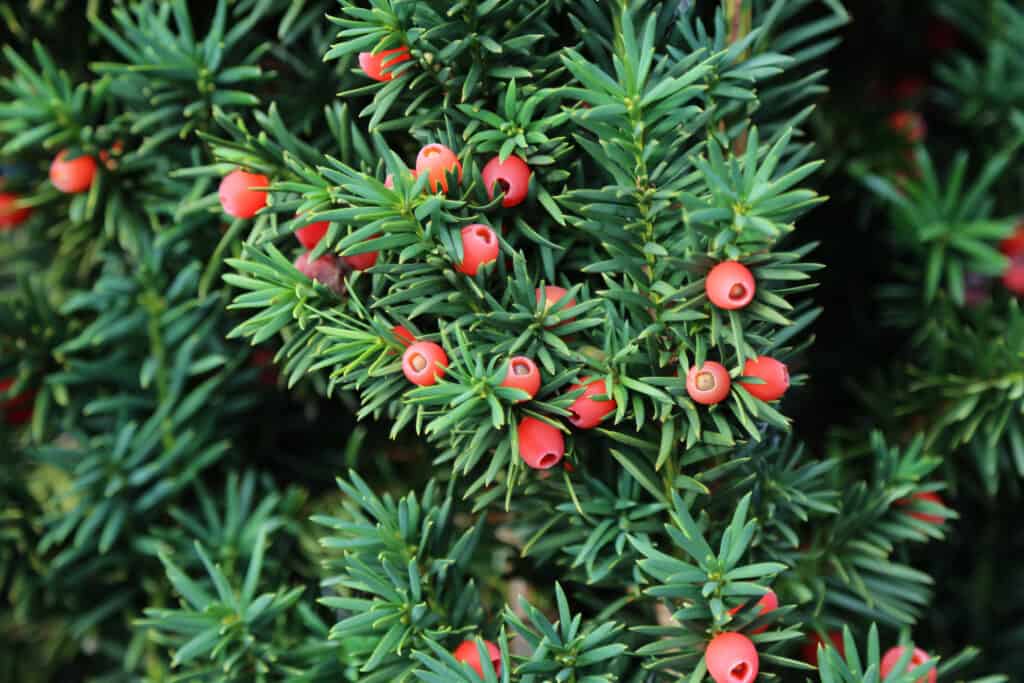
iStock.com/Leo Malsam
The scientific name for yew trees is Taxus – which can include both shrubs and coniferous trees. Yew trees are known for growing relatively slowly and living a long time. Compared to most evergreen trees, yews are of medium height – about 8.2 to 65.6 feet.
The yew tree is toxic to humans. All parts of the tree but one, its berries, can cause lethargy, skin rashes, asthma attacks, and other symptoms.
Evergreen Trees – What Are Tropical Hardwoods?
Tropical hardwood is a term commonly used to refer to any wood (mainly timber) growing in tropical rainforests and tropical/subtropical moist broadleaf forests. It is not a genus, as the representative evergreen tropical hardwoods come from different subfamilies and genera. All of them are, however, angiosperms.
Tamarind
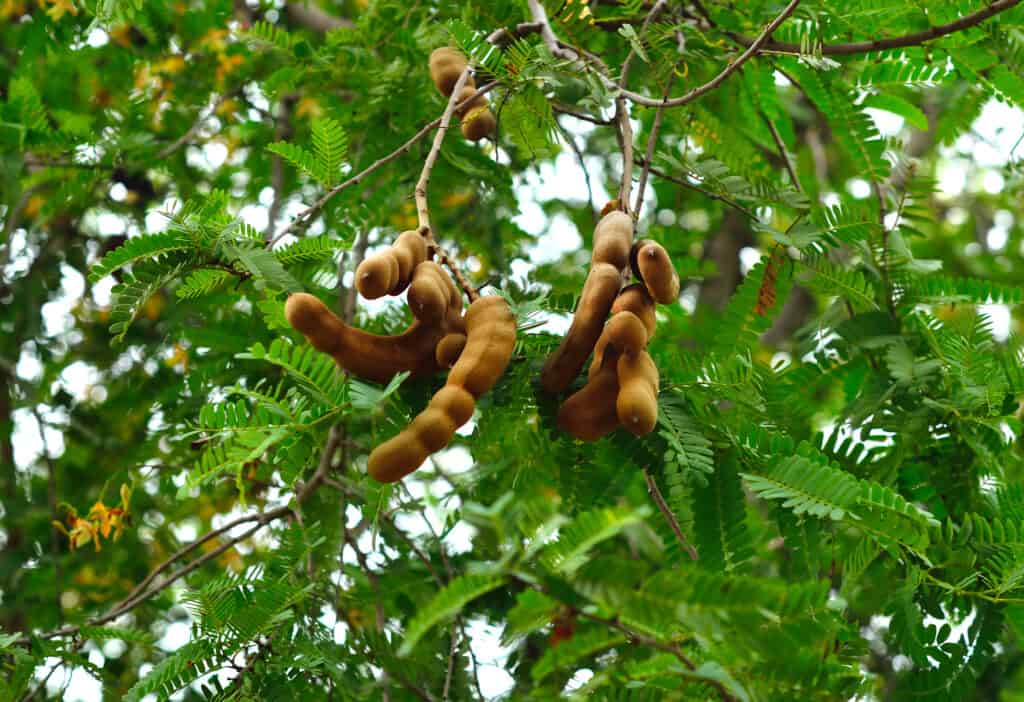
iStock.com/mypuy
The tamarind tree can be found in tropical Africa, and it is the only species of the Tamarindus genus. The tree is known for its many uses – it features fruits that can be used in cooking, as well as metal polish and traditional medicine. The wood and seed oil of the tamarind tree have uses as well.
Lastly, the tree’s leaves are used in the traditional cuisine of the Philippines and India.
Mahogany
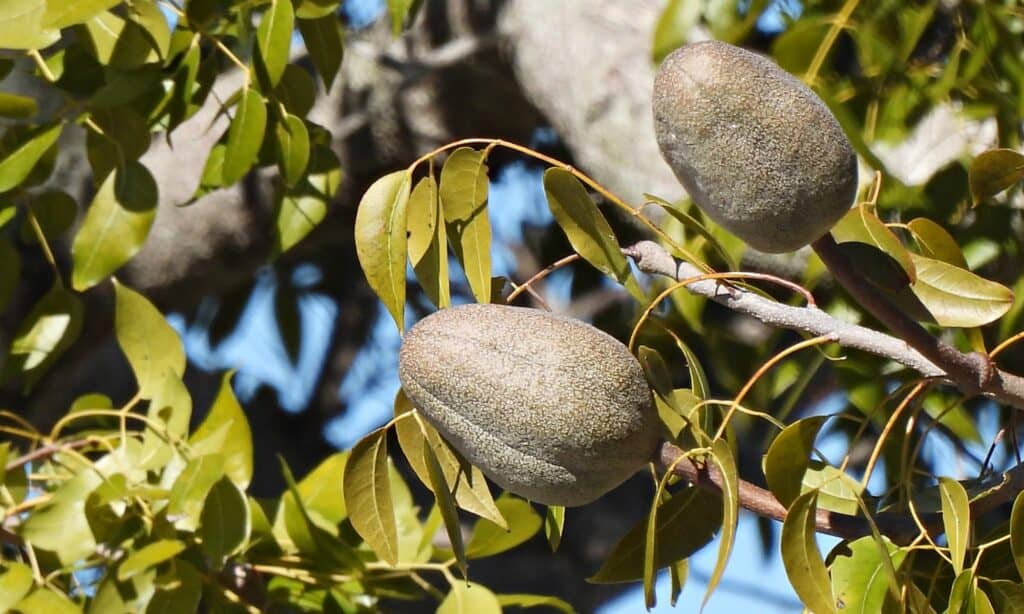
iStock.com/passion4nature
Mahogany is a tropical hardwood and consists of three species in the Swietenia genus. Its main characteristic is the reddish-brown timber that’s used all over the world in woodworking. The tree is found in the Americas, as well as in Asia and Oceania, where it has been imported and later planted.
All three species of this genus, also known as genuine mahogany, are evergreen. However, some sources state that mahogany trees can be deciduous, semi-evergreen, or evergreen, depending on the species and perhaps location.
Eucalyptus
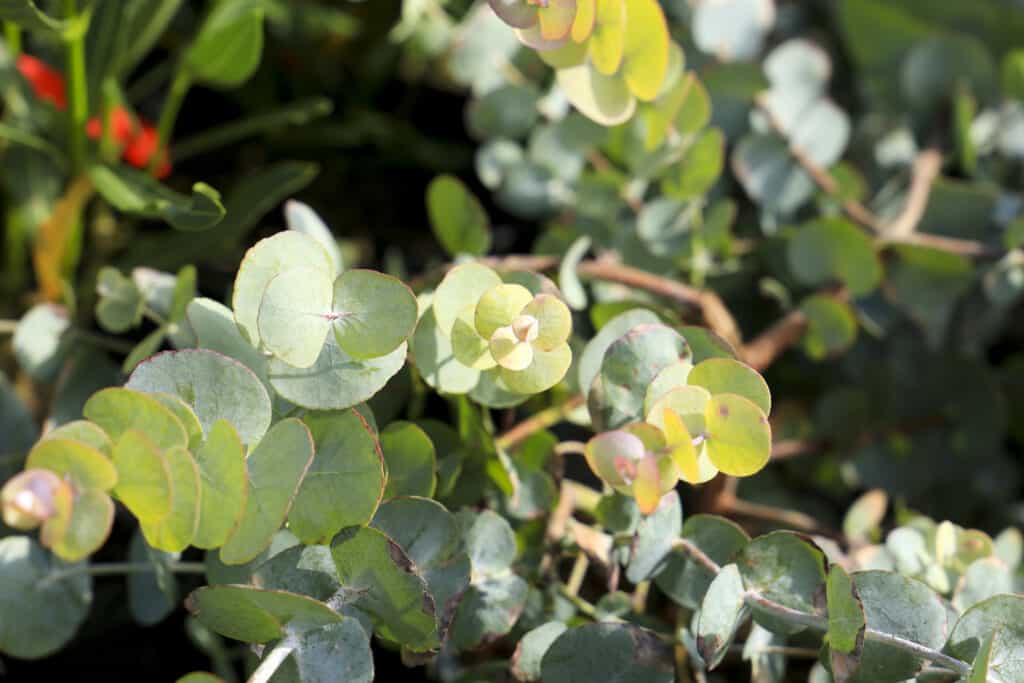
iStock.com/soniabonet
This genus includes more than 700 species of mallees, shrubs, or trees. This makes it extremely difficult to determine which species are evergreen and which aren’t. However, the genus as a whole is regarded as evergreen, with most eucalyptus trees being broad-leaved evergreen trees.
Eucalyptus trees can be found mainly in Australia – they make up about three-quarters of all forests in Australia.
Evergreen Trees – What Are Temperate Broad-leaved Trees?
As the name implies, temperate broad-leaved trees are found in temperate climates worldwide. These trees are usually found in mixed forests, but ecoregions dominated by broadleaf trees exist. Broadleaf trees are the opposite of conifers, one of the two general types of trees.
Rhododendron
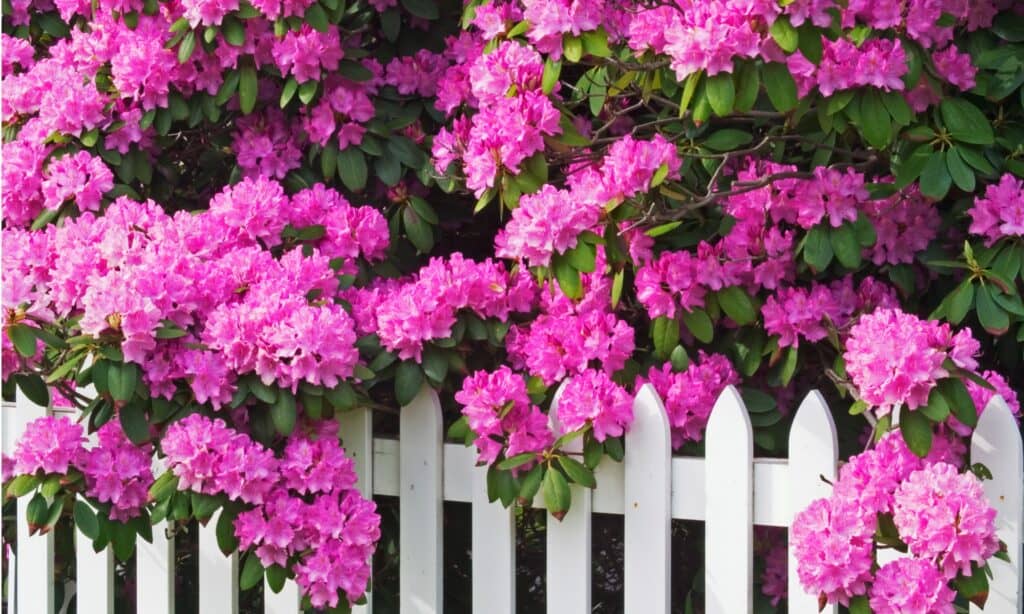
iStock.com/dndavis
Rhododendron is the Ancient Greek name for the rose tree and is a genus consisting of woody plants. The genus has about 1,024 species which can be either deciduous or evergreen. Rose trees are predominantly found in the Himalayas and eastern Asia. Specimens can also be found in Europe, North America, and Australia.
The genus is known for its brightly colored flowers, which resemble roses. These flowers bloom in late winter and last until early summer.
Oak
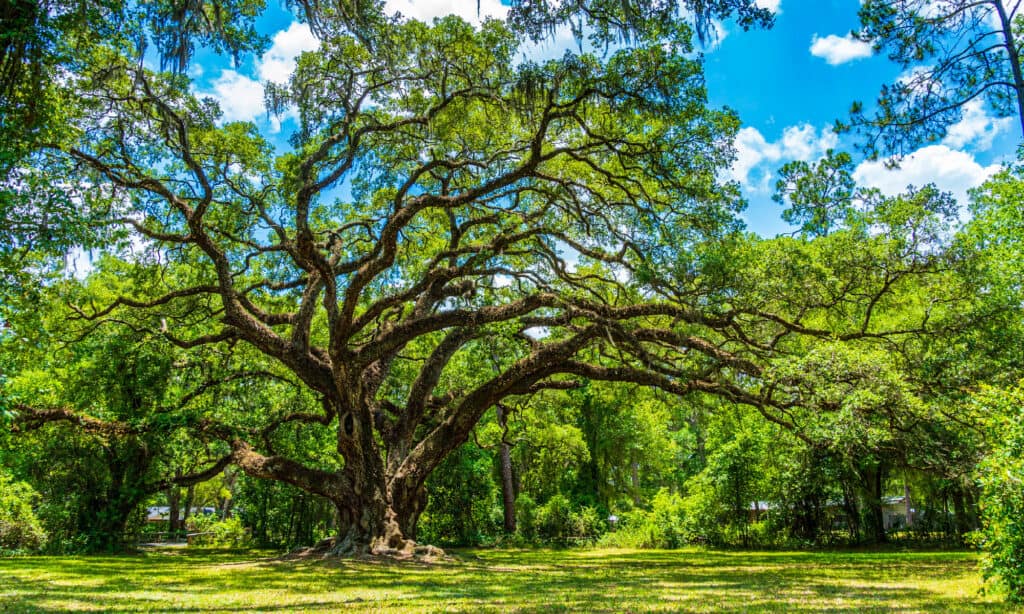
iStock.com/Sunshower Shots
The oak tree is part of the Quercus genus and consists of about 500 extant species. Oak specimens can be either deciduous or evergreen and are adapted to living in tropical and cool temperate latitudes. The largest number of oak species can be found in North America (160 species) and China (100 species).
The interesting thing about this genus is that it doesn’t have any definite evergreen species. Instead, any oak that features evergreen foliage and is part of different sections in the genus is called a live oak – or evergreen oak.
Holly
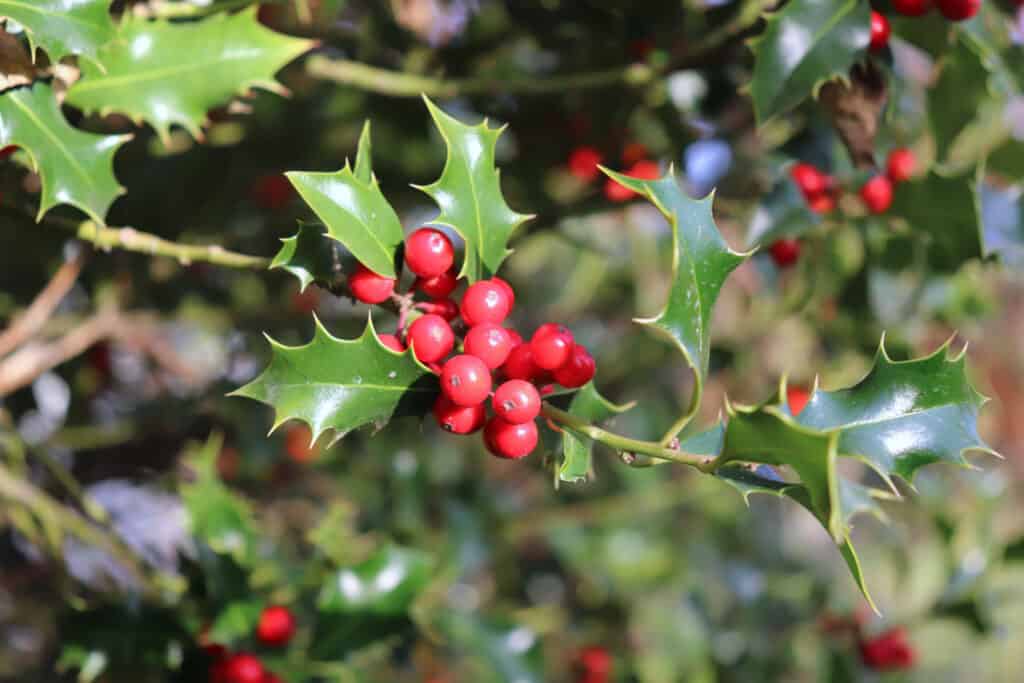
iStock.com/Hana Richterova
The species of the Ilex genus are known as flowering plants. The genus consists of more than 560 species which can be either deciduous or evergreen. Flowering plants that the genus encompasses can be climbers, shrubs, and trees. Ilex is known worldwide by its type species, the famous holly.
Evergreen Trees – Uncategorized Species
As uncategorized species, we have cycads and three species of palm – date, king, and foxtail palms. Cycads are often referred to as seed plants, but thanks to their woody trunk, they are, in fact, evergreen trees. The same happens in the case of the palm species – most specimens are referred to as shrubs, climbers, or tree-like plants. However, palms that resemble trees are called palm trees.
Cycads
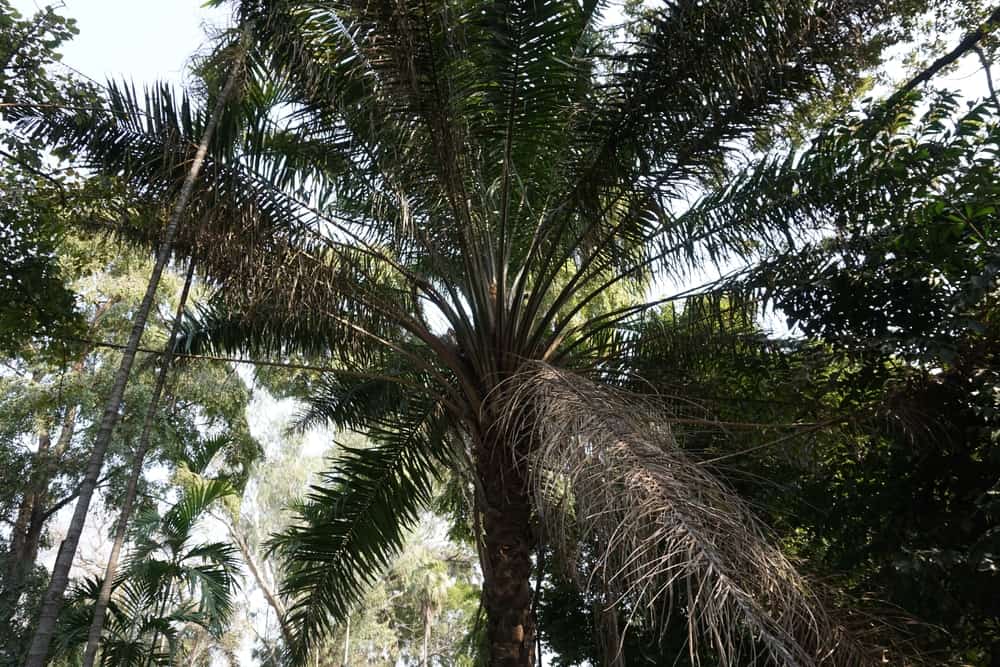
Vipul1989/Shutterstock.com
Cycads are part of the Gymnosperms clade, mainly due to the fact that they feature a woody trunk and evergreen foliage. They are often mistaken for common ferns or palms.
The main characteristic of most cycad species is that their trunk doesn’t branch. Instead, leaves grow directly from the tree’s trunk.
Palms
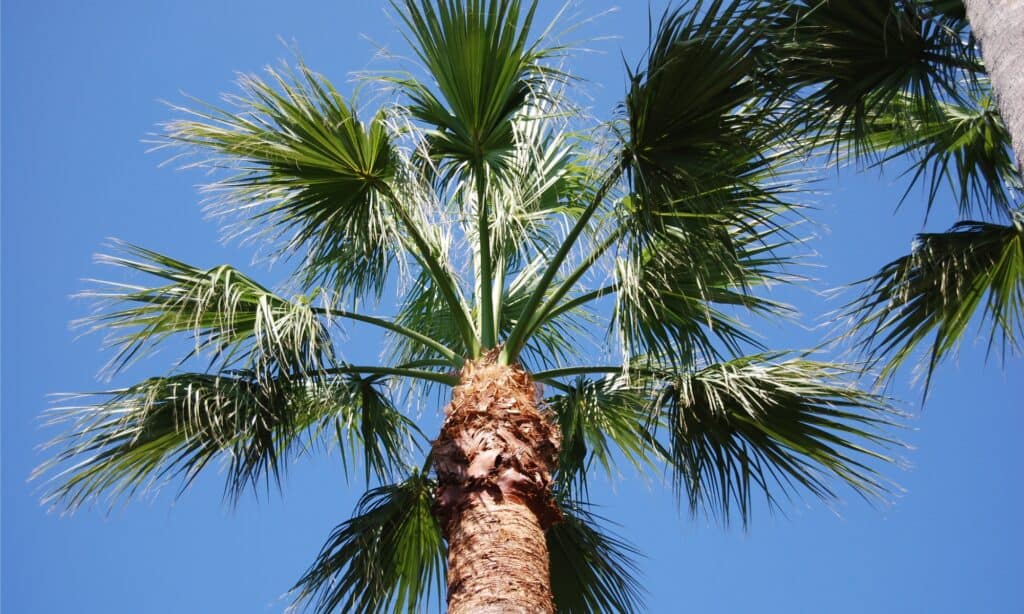
iStock.com/tadamee
The Arecaceae family consists of shrubs, climbers, and tree-like plants. Every palm that has a tree-like shape is referred to as a palm tree and can be called an evergreen tree. The main characteristics of palms are their large and compound foliage. However, it is worth noting that palms overall are extremely diverse visually.
Palms are known as the most extensively cultivated plant family in the world. They have been used since ancient times and bear symbolic meanings. That’s probably why they’re predominantly used in landscaping nowadays.
Up Next:
- Discover the 11 Different Types of Spruce Trees
- Coconut Tree vs. Palm Tree: 5 Key Differences
- The Largest Trees in California
The post The Different Types of Evergreen Trees appeared first on AZ Animals.
from Animal News, Facts, Rankings, and More! - AZ Animals https://ift.tt/hIFKfOU